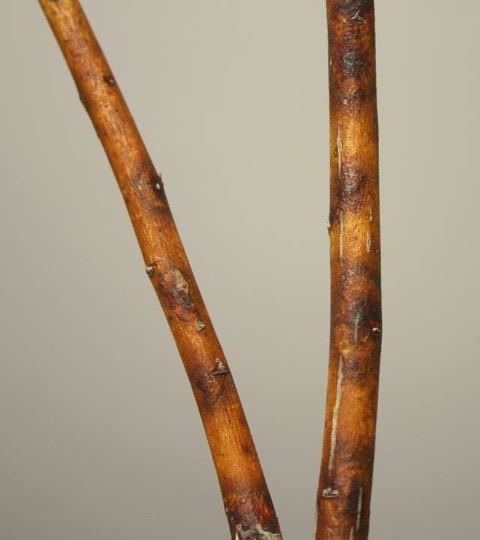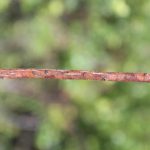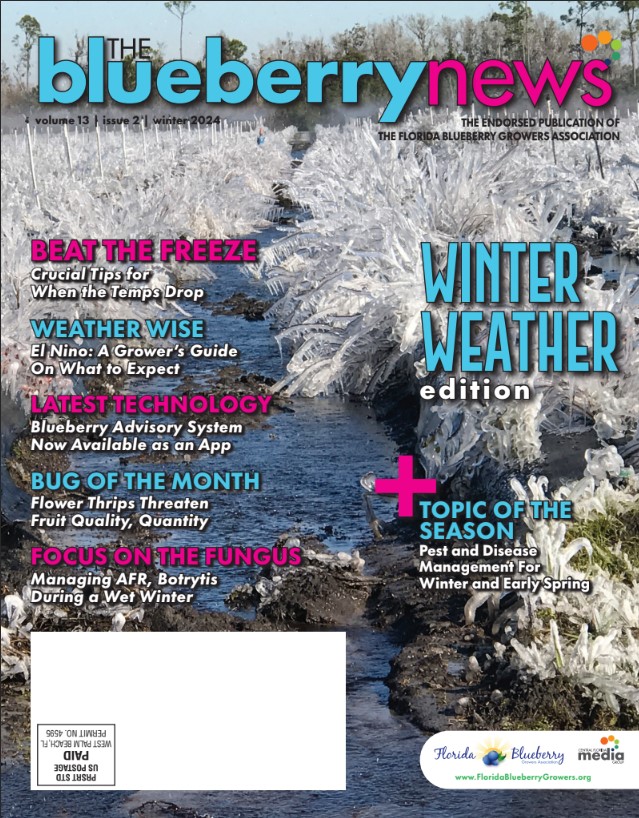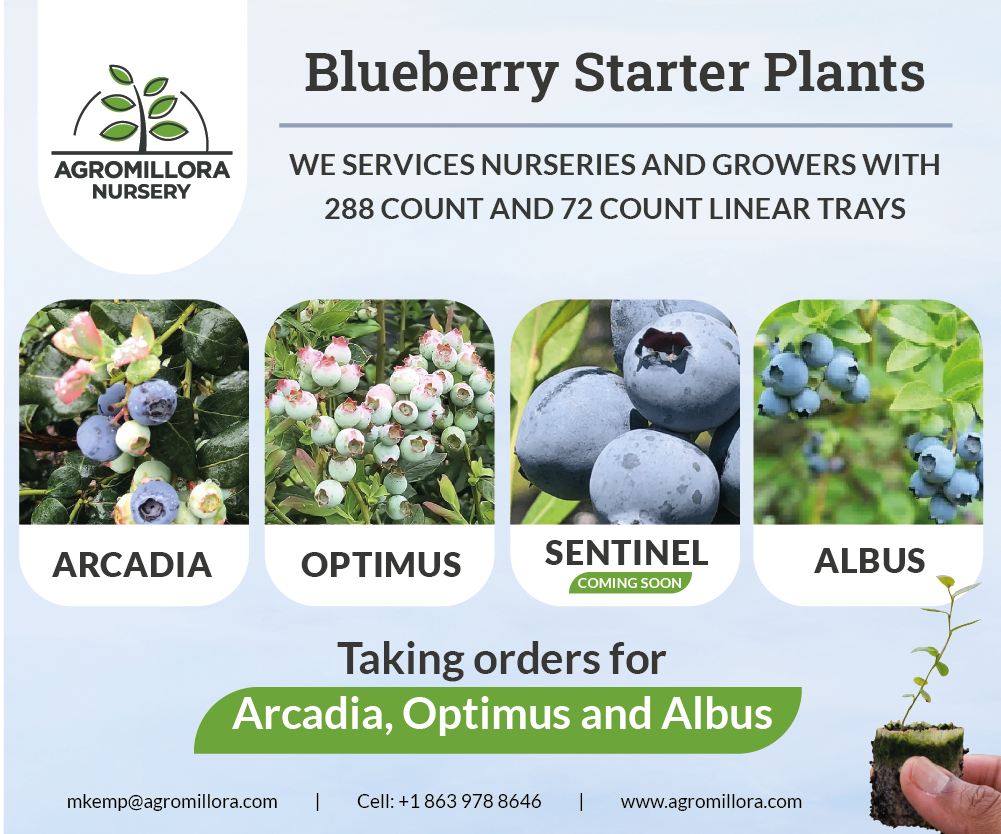Grower 411: Watch for Algal Stem Blotch As Weather Gets Warmer and Wetter. Provided by: Doug Phillips UF Blueberry Extension Coordinator
Category: Blueberry Blog
Aug
15
Initial infections may take up to one year to produce symptoms. Reproductive spores are produced between May and September during wet conditions and are dispersed by wind and water. Overhead irrigation may contribute to conditions favorable for disease development and spread; where possible, drip irrigation should be used instead of overhead when this disease is present. Early symptoms include small red blotches or lesions on young stems that expand to form irregular patches and can encircle canes (Figure 1). When conditions become more humid, orange mats or tufts of algal growth appear from the lesions (Figure 2). In addition, canes with pale yellow to white leaves and stunted growth typically appear as the disease advances (Figure 3). The primary impact of this disease is a reduction in plant vigor, with a lack of regrowth in major canes following summer pruning in some cases. This damage can also leave the canes susceptible to Botryosphaeria, which can lead to cane dieback. Starting new plantings with disease free stock can help to avoid disease from the outset. When infection does occur, algal stem blotch can typically be managed (but not eradicated) through the use of copper hydroxide fungicides. These products should not be mixed with fertilizer, acidifying buffers, insecticides, or fungicides with EC formulations. Spray applications should be made beginning after harvest is completed, every four weeks at the label rate (or every two weeks at a lower label rate for severe infections) through September or October, making sure to have good canopy penetration and cane coverage. Applications on this schedule must be made consistently in order to be effective. Although this won’t have an impact on current symptoms, it will kill the reproductive structures to minimize the spread and infection of new plant tissue. Maintaining good management practices (irrigation, fertilization, disease, and pest control) can reduce plant stress, making them less susceptible to disease. In addition, removing and destroying infected canes and improving air circulation in the canopy through pruning may help minimize the spread of algal stem blotch.
Share this post:









